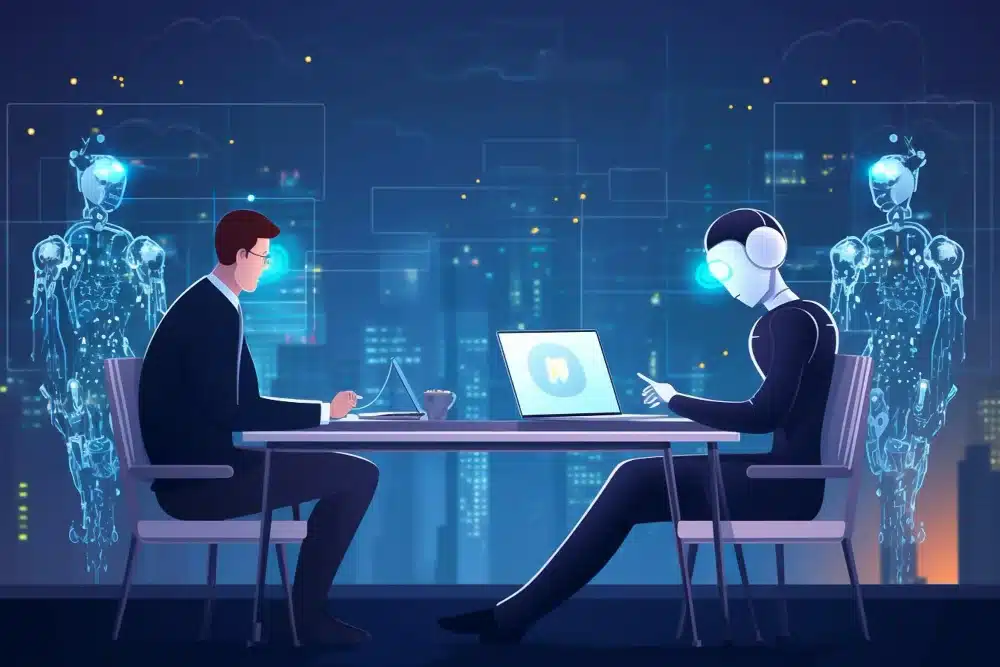The five main purposes of communication are to inform, express feelings, imagine, influence, and meet social expectations. These functions help us share knowledge, convey emotions, explore creativity, persuade others, and fulfill social norms.
Table of Contents
ToggleInform
News Reporting
News reporting is vital for informing the public about current events. During the COVID-19 pandemic, news outlets provided daily updates on case numbers, vaccination rates, and safety guidelines. For example, The New York Times reported that by June 2021, the U.S. had administered over 300 million vaccine doses. Accurate and timely news reports help keep the public informed and safe. These updates often included detailed statistics, government responses, and expert opinions to provide a comprehensive understanding of the situation.
Educational Resources
Educational platforms like Khan Academy and Coursera offer structured courses that inform users on various subjects. Khan Academy, for instance, provides over 10,000 videos on topics ranging from math to history. These resources are essential for self-learning and academic support, reaching millions of students globally. In 2020 alone, Khan Academy saw an increase of 20 million new users due to the shift to online learning during the pandemic.
Government Announcements
Governments use official channels to inform citizens about policies, emergencies, and public services. During natural disasters, agencies like FEMA in the U.S. provide real-time updates and safety instructions. Clear and timely government communication can save lives and coordinate effective disaster response. For example, during Hurricane Katrina, FEMA’s updates helped in the evacuation and relief efforts, although the agency faced criticism for delays and inefficiencies.
Scientific Research
Scientific journals and conferences disseminate new discoveries and advancements. The publication of the Human Genome Project in 2003, which mapped all human genes, informed researchers and the public about genetic structures. Sharing research findings accelerates scientific progress and educates the public. The project involved scientists from 20 institutions across six countries and provided data that have been cited in over 100,000 scientific articles.
Corporate Communications
Companies inform stakeholders about financial results, strategic plans, and operational updates through reports and meetings. For example, Apple’s quarterly earnings reports detail revenue, profit margins, and product sales. Transparent corporate communication builds trust and keeps stakeholders informed about the company’s performance. Apple’s Q1 2021 report showed a revenue of $111.4 billion, demonstrating its financial health and market position

Express Feelings
Social Media Posts
Social media platforms like Twitter and Instagram are primary venues for expressing feelings. For instance, after the passing of renowned actor Chadwick Boseman in 2020, millions of posts flooded social media with tributes and expressions of grief. These platforms provide an immediate outlet for public and personal emotions, reflecting real-time sentiments. Studies show that tweets expressing sadness or grief can surge by up to 200% following significant events.
Personal Conversations
Personal conversations are crucial for expressing feelings. In a workplace setting, employees might express frustration during team meetings about project delays. Direct communication about emotions can help in understanding team dynamics and resolving conflicts efficiently. Research indicates that teams with open emotional communication report 20% higher satisfaction and productivity.
Art and Literature
Artists and writers often express their feelings through their works. For example, Frida Kahlo’s paintings are known for their intense and personal emotional expression, depicting her pain and suffering. Art and literature offer a medium for deep emotional expression that resonates with audiences globally. Kahlo’s “The Broken Column” vividly illustrates her physical and emotional torment, drawing in millions of viewers.
Public Speeches
Public speeches are powerful tools for expressing feelings. Martin Luther King Jr.’s “I Have a Dream” speech is a seminal example, expressing deep hope and conviction for racial equality. Such speeches can mobilize and inspire millions, leaving a lasting impact on society. King’s speech, delivered to over 250,000 people, remains one of the most poignant expressions of hope and justice in history.
Music
Music is a universal language of emotion. Songs like Adele’s “Someone Like You” convey deep feelings of heartbreak and longing, resonating with a wide audience. Music’s ability to convey complex emotions can deeply impact listeners and connect them on an emotional level. Adele’s song sold over 5 million copies in the United States alone, highlighting its emotional resonance.
Imagine
Fictional Writing
Authors create imaginary worlds and scenarios to entertain and provoke thought. J.K. Rowling’s “Harry Potter” series, for example, imagines a magical world that has captivated millions of readers globally. The series has sold over 500 million copies worldwide, making it one of the best-selling book series in history. Rowling’s detailed world-building and imaginative characters have inspired a whole generation of readers and spawned a massive franchise including movies, theme parks, and merchandise.
Film and Television
Movies and TV shows present imagined stories that reflect or distort reality. The Marvel Cinematic Universe, for instance, imagines a world with superheroes and extraordinary events, engaging viewers with its creativity. This franchise has generated over $22 billion in box office revenue globally. The interconnected storylines and dynamic characters have created a vast, imaginative universe that continues to attract a massive audience.
Advertising Campaigns
Marketers use imagination to create compelling advertisements. Coca-Cola’s “Share a Coke” campaign personalized bottles with names, encouraging people to imagine sharing a Coke with friends and loved ones. The campaign increased sales in the United States by over 2% and generated a significant amount of social media interaction. By tapping into personal connections, the campaign successfully engaged consumers on a personal level.
Game Design
Video game designers create immersive imaginary worlds. Games like “The Legend of Zelda” series allow players to explore fantastical realms, solving puzzles and embarking on epic quests. The series has sold over 125 million copies since its debut in 1986. These games offer players an opportunity to immerse themselves in imaginative and interactive experiences, blending storytelling with gameplay.
Innovation Workshops
Businesses and educational institutions hold workshops to foster creative thinking. Brainstorming sessions and design thinking workshops help participants imagine new products, services, and solutions to problems. For example, IDEO, a global design company, uses design thinking to innovate and has worked with companies like Apple and PepsiCo to create breakthrough products. These workshops encourage participants to think outside the box and collaborate on imaginative solutions to complex challenges
Influence
Political Campaigns
Politicians use communication to influence voters. During the 2008 U.S. presidential campaign, Barack Obama’s message of “Hope and Change” resonated with millions, leading to a historic voter turnout. Obama’s campaign leveraged social media, raising over $750 million and mobilizing a grassroots movement. His speeches, advertisements, and debates were meticulously crafted to inspire and persuade the electorate.
Marketing and Advertising
Brands influence consumer behavior through strategic communication. Nike’s “Just Do It” campaign is a prime example, motivating people to pursue their athletic goals and boosting brand loyalty. This campaign, launched in 1988, helped Nike increase its share of the North American domestic sport-shoe business from 18% to 43%. The slogan and associated advertisements continue to resonate globally, driving significant sales and brand recognition.
Public Health Initiatives
Health organizations influence public behavior to improve health outcomes. Anti-smoking campaigns by the American Lung Association use stark imagery and statistics to discourage smoking. These campaigns have contributed to the decline in smoking rates, from 42% in 1965 to 14% in 2019 among U.S. adults. Public service announcements, graphic warnings, and educational programs are key elements in reducing smoking prevalence.
Social Movements
Activists communicate to influence societal change. The #MeToo movement, which began in 2017, raised awareness about sexual harassment and influenced changes in workplace policies and social attitudes globally. Within the first year, the movement saw millions of people sharing their stories on social media, leading to significant policy changes and high-profile resignations. The movement demonstrated the power of collective voice in driving social reform.
Corporate Leadership
Leaders influence their teams through communication. Steve Jobs’ keynote speeches at Apple product launches were legendary for their ability to inspire both employees and customers. His presentations, characterized by their simplicity and powerful messaging, played a significant role in Apple’s success, contributing to a market capitalization of over $2 trillion by 2020. Jobs’ communication style helped shape Apple’s brand and motivated its workforce to achieve excellence.

Meet Social Expectations
Workplace Communication
Employees communicate to meet professional expectations through regular updates, timely email responses, and adherence to communication protocols. For example, in companies like Google, employees are expected to participate in daily stand-up meetings to discuss progress and roadblocks. These meetings, typically lasting 15 minutes, ensure everyone is aligned and any issues are addressed promptly. Timely communication is crucial for maintaining workflow efficiency and meeting project deadlines.
Social Etiquette
Polite conversation at social events meets societal expectations. For instance, at weddings, guests are expected to offer congratulations to the newlyweds and engage in small talk with other attendees. Expressions of gratitude for invitations and compliments about the event are common practices that uphold social norms and foster a pleasant atmosphere. Following these etiquettes helps in building and maintaining social relationships.
Customer Service
Businesses communicate with customers to meet service expectations. Companies like Amazon provide prompt customer support through various channels, including chat, email, and phone. Amazon’s customer service is known for its efficiency, with 24/7 availability and a resolution rate that significantly enhances customer satisfaction. They handle millions of inquiries monthly, ensuring customers feel valued and supported.
Educational Settings
Teachers and students communicate to meet educational standards. In classrooms, teachers provide clear instructions and feedback, while students are expected to participate actively and submit assignments on time. For instance, in U.S. schools, the average teacher provides feedback on assignments within a week, helping students understand their progress and areas for improvement. Effective communication in education is key to achieving learning objectives.
Family Interactions
Family members communicate to maintain relationships and meet familial expectations. Regular check-ins, holiday greetings, and attending family gatherings are common practices. In the U.S., 97% of people consider family the most important social connection, and regular communication plays a significant role in maintaining these bonds. Activities like family dinners and reunions help strengthen relationships and ensure mutual support




